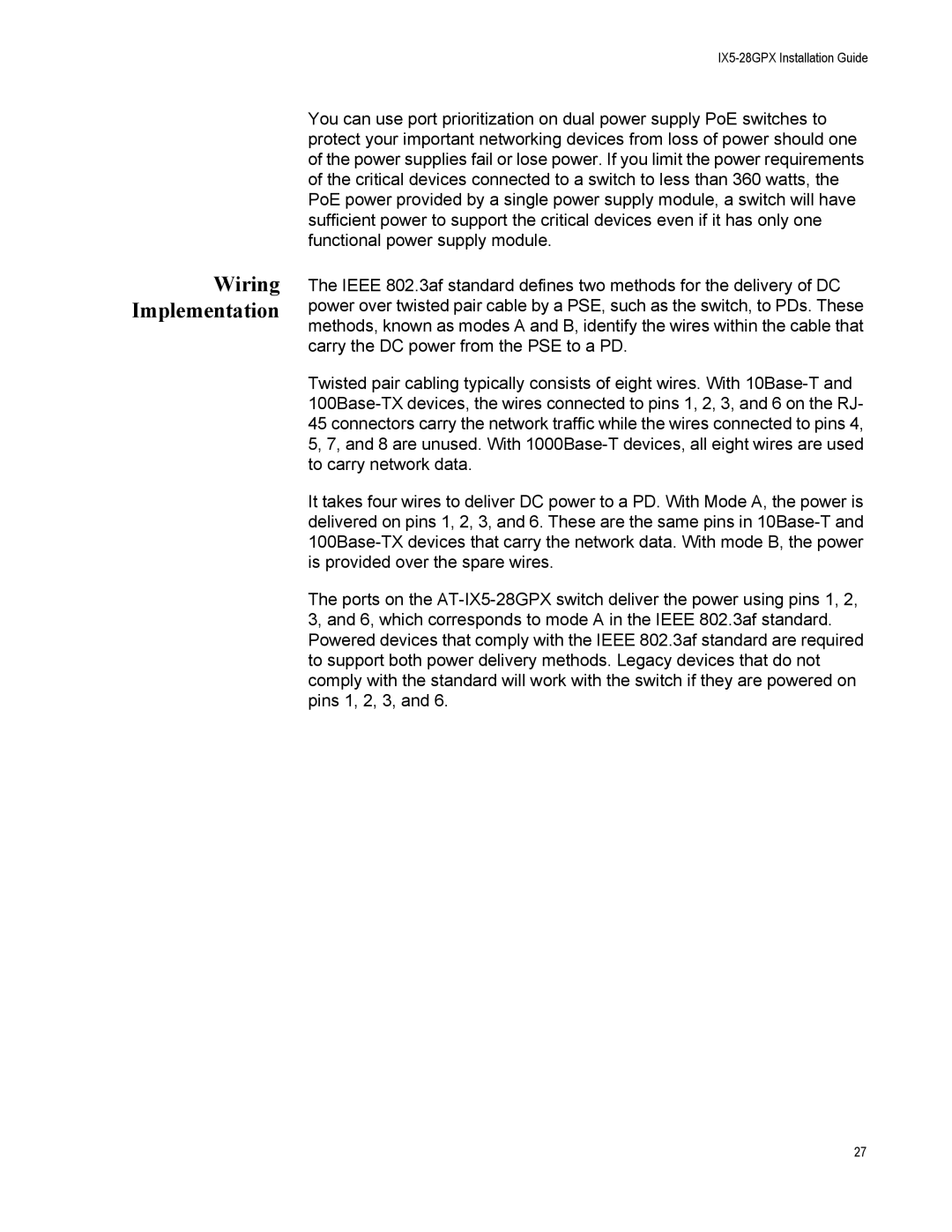Wiring Implementation
You can use port prioritization on dual power supply PoE switches to protect your important networking devices from loss of power should one of the power supplies fail or lose power. If you limit the power requirements of the critical devices connected to a switch to less than 360 watts, the PoE power provided by a single power supply module, a switch will have sufficient power to support the critical devices even if it has only one functional power supply module.
The IEEE 802.3af standard defines two methods for the delivery of DC power over twisted pair cable by a PSE, such as the switch, to PDs. These methods, known as modes A and B, identify the wires within the cable that carry the DC power from the PSE to a PD.
Twisted pair cabling typically consists of eight wires. With
It takes four wires to deliver DC power to a PD. With Mode A, the power is delivered on pins 1, 2, 3, and 6. These are the same pins in
The ports on the
27
